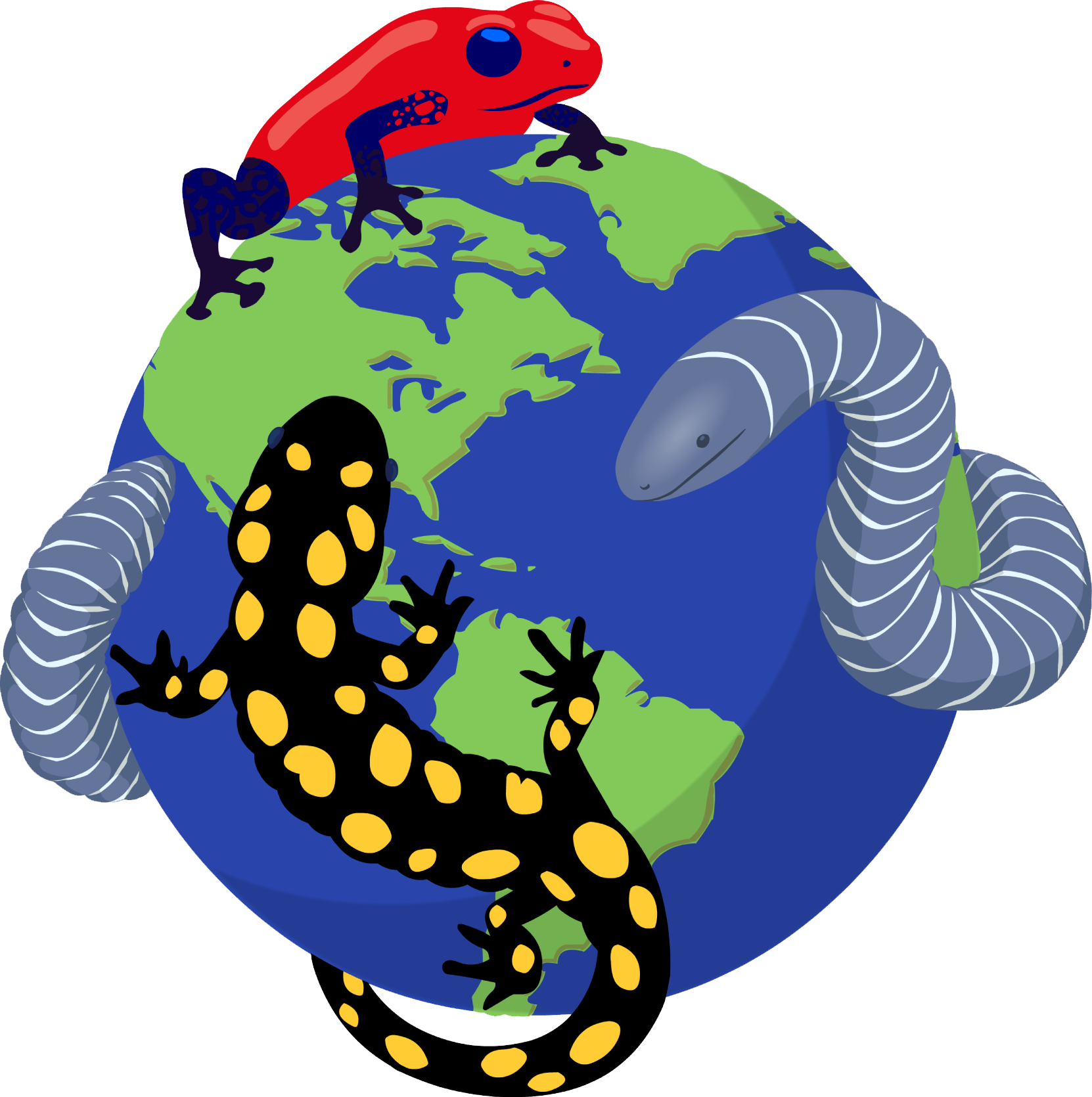|
Schistometopum ephele
Aqua Ize Caecilian | family: Dermophiidae genus: Schistometopum |
| Species Description: Taylor E.H. 1965. New Asiatic and African caecilians with redescriptions of certain other species. University of Kansas Science Bulletin 46: 253–302. | |
|
Taxonomic Notes: First described by Taylor, E. H. 1965. Removed from synonymy of Schistometopum thomense by O'Connell KA, et al. (2021) Speciation and secondary contact in a fossorial island endemic, the Sao Tome caecilian. Molecular Ecology. https://doi.org/10.1111/mec.15928 |
|
|
Etymology: The genus, "Schistometopum" is a Latin neuter noun meaning "split forehead" (Nussbaum and Pfrender 1998). |
|
 © 2021 Rayna Bell (1 of 3) |
|
|
|
Distribution and Habitat Country distribution from AmphibiaWeb's database: Sao Tome and Principe
Comments O'Connell et al. (2021) investigated speciation in caecilians from the small oceanic island of São Tomé off the west coast of Central Africa in the Gulf of Guinea. Although small, the island of São Tomé exhibits dramatic variation in habitat type, with dry habitats in the north and rainforest in the south. They found two genetically distinct lineages of caecilians corresponding to yellow populations in the north (Schistometopum thomense) and brown spotted populations in the south (Schistometopum ephele). Further, they found evidence of hybridization at the transition of the two habitat types. The authors proposed that late Pleistocene volcanic activity separated caecilians on the island and favored local adaptation to wet and dry climates, leading to speciation and the maintenance of a hybrid zone. This study is one of the first to document speciation histories in caecilians and lays the groundwork for future studies of reproductive isolation in this group. (written by Rayna Bell) References Originally submitted by: Michelle S. Koo (2021-06-07) Comments by: Michelle S. Koo (updated 2021-06-07)
Edited by: Ann T. Chang (2025-01-13) Species Account Citation: AmphibiaWeb 2025 Schistometopum ephele: Aqua Ize Caecilian <https://amphibiaweb.org/species/9384> University of California, Berkeley, CA, USA. Accessed May 23, 2025.
Feedback or comments about this page.
Citation: AmphibiaWeb. 2025. <https://amphibiaweb.org> University of California, Berkeley, CA, USA. Accessed 23 May 2025. AmphibiaWeb's policy on data use. |


 Map of Life
Map of Life